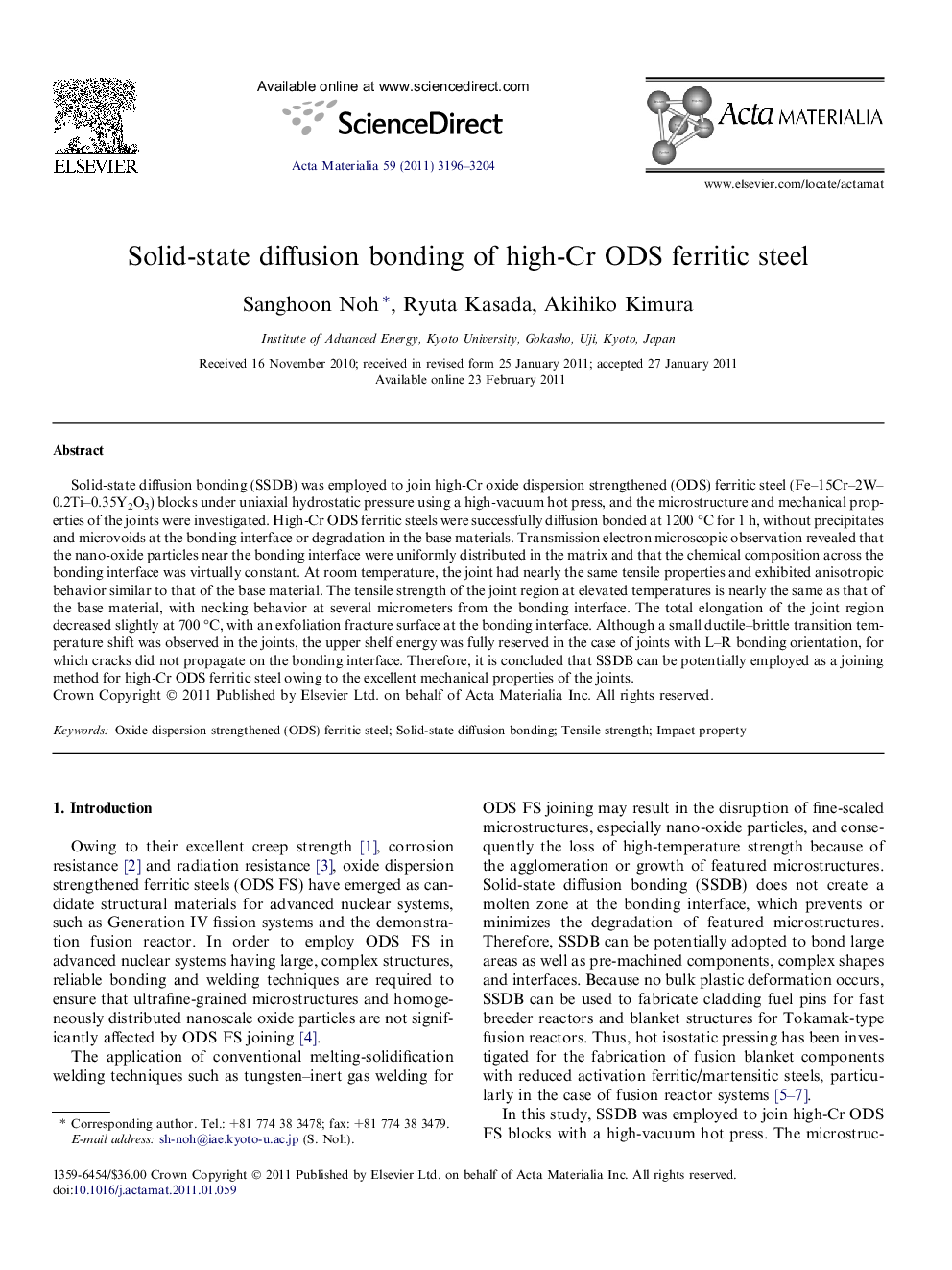| Article ID | Journal | Published Year | Pages | File Type |
|---|---|---|---|---|
| 1447202 | Acta Materialia | 2011 | 9 Pages |
Solid-state diffusion bonding (SSDB) was employed to join high-Cr oxide dispersion strengthened (ODS) ferritic steel (Fe–15Cr–2W–0.2Ti–0.35Y2O3) blocks under uniaxial hydrostatic pressure using a high-vacuum hot press, and the microstructure and mechanical properties of the joints were investigated. High-Cr ODS ferritic steels were successfully diffusion bonded at 1200 °C for 1 h, without precipitates and microvoids at the bonding interface or degradation in the base materials. Transmission electron microscopic observation revealed that the nano-oxide particles near the bonding interface were uniformly distributed in the matrix and that the chemical composition across the bonding interface was virtually constant. At room temperature, the joint had nearly the same tensile properties and exhibited anisotropic behavior similar to that of the base material. The tensile strength of the joint region at elevated temperatures is nearly the same as that of the base material, with necking behavior at several micrometers from the bonding interface. The total elongation of the joint region decreased slightly at 700 °C, with an exfoliation fracture surface at the bonding interface. Although a small ductile–brittle transition temperature shift was observed in the joints, the upper shelf energy was fully reserved in the case of joints with L–R bonding orientation, for which cracks did not propagate on the bonding interface. Therefore, it is concluded that SSDB can be potentially employed as a joining method for high-Cr ODS ferritic steel owing to the excellent mechanical properties of the joints.
Research highlights► Oxide dispersion strengthened ferritic steel joined by solid-state diffusion bonding. ► Free of precipitates and micro-voids at the bonding interface was existed. ► Joints had the same tensile properties with anisotropy of the base material. ► USE of joints was fully reserved in L–R bonding orientation. ► Cracks did not propagate on the bonding interface at the Charpy impact test.
